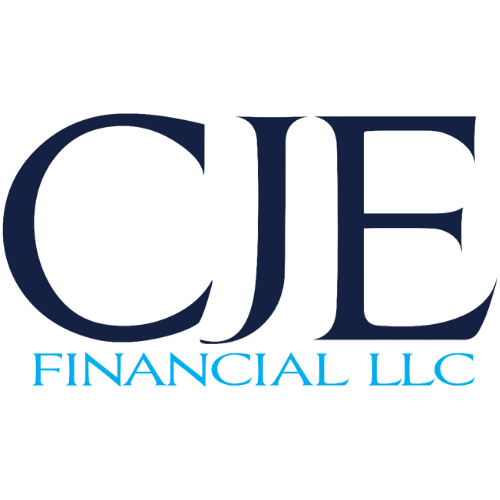Tax-Efficient Strategies for Year-End Planning
As the end of the year approaches, it's a prime opportunity to take stock of your financial landscape and implement tax-efficient strategies that can make a significant difference in your overall tax picture.
Offset Capital Gains and Reduce Taxable Income with Tax-Loss Harvesting
Researchers at MIT and Chapman University calculated that tax loss harvesting yielded almost an additional 1% annual return each year from 1928 to 2018. (1)
Tax-loss harvesting is a strategic technique used to minimize your tax liabilities by offsetting capital gains with capital losses. Essentially, it involves selling investments that have decreased in value to realize a loss.
As a result, you only pay taxes on your net profit, or the amount you’ve gained minus the amount you lost, thereby reducing your tax bill. (1)
Investors can opt to use the proceeds from the sale of their assets to fund purchases of similar investments that may grow over time- presumably more than the investments they just sold- and help recoup their losses.
There are rules to keep in mind while navigating your next purchase. For instance, you can’t sell a stock to realize a loss and minimize your tax burden and then rebuy that exact same stock, or even one that’s nearly identical. The wash sale rule does not, however, preclude purchasing securities in the same industry. (1)
Practical Steps for Implementing Tax Harvesting
1. Evaluate your current investments to identify any that have declined in value since their purchase. Sell them by December 31 to make sure that losses are realized and applicable for the current tax year.
2. Use the capital losses to offset capital gains on other sales.
3. Replace the investments after harvesting losses.
Benefits and Potential Tax Deductions Associated with Charitable Donations
When you donate to charity, you’re not only giving back, but you could be getting back. If you’re donating to qualified charitable organizations, you may be eligible to deduct these contributions from your taxable income, potentially lowering your tax liability. For donations made in cash or by check, you can typically deduct up to 60% of your adjusted gross income (AGI). (3)
When donating property, in general, you will only deduct the fair market value of your charitable contribution.
The IRS provides a tool called the “Exempt Organizations Select Check” that allows you to verify if a charity is eligible to receive tax-deductible donations.
To ensure you can claim the full tax deduction, it's crucial to maintain proper documentation of all charitable contributions. For cash donations, keep receipts or bank statements, and for donations over $250, obtain written acknowledgment from the charity. When donating goods or property, you should document the value of the items and obtain a receipt from the organization.
For those looking to streamline their charitable giving, donor-advised funds (DAFs) offer an efficient and flexible solution.
A donor-advised fund, or DAF, is like a charitable investment account for the sole purpose of supporting charitable organizations.
When you contribute cash, securities, or other assets to a DAF at a public charity, you are generally eligible to take an immediate tax deduction. (4)
DAFs also simplify record-keeping, as the sponsoring organization handles the administrative aspect and provides you with consolidated reports for tax purposes.
Maximizing Your Retirement Contributions
One of the most effective strategies for reducing your taxable income is to maximize contributions to retirement accounts such as 401(k)s and IRAs.
Tax-deferred means you don’t pay taxes until you withdraw your funds, instead of paying them upfront when you make contributions. With tax-deferred accounts, your contributions are typically deductible now, and you’ll only pay applicable taxes on the money you withdraw in retirement.
The IRS sets annual contribution limits on how much you can put into tax-deferred retirement accounts such as traditional IRAs and employer-sponsored plans like 401(k)s. (5)
For traditional 401(k)s and IRAs, contributions are made with pre-tax dollars, reducing your current tax bill and allowing your savings to compound over time without being immediately diminished by annual taxes.
Converting to a Roth IRA, however, can be a strategic addition to your retirement planning. Unlike traditional IRAs, Roth IRAs are funded with after-tax dollars, meaning that your contributions do not reduce your taxable income in the year they are made.
However, once the money is in a Roth IRA, it grows tax-free, and qualified withdrawals during retirement are also tax-free. (6)
Before converting, keep these three points in mind:
A Roth IRA conversion cannot be recharacterized, which is why it’s important to understand your tax situation and ability to pay for a conversion beforehand.
To help manage your tax liability, you may choose to convert just a portion of your assets. There is no limit to the number of conversions you can do, so you may convert smaller amounts over several years.
A five-year waiting period is required if you are under age 59 1/2 before you can distribute the converted amount without owing the 10% additional tax. (6)
Closing Thoughts
Whether you’re looking to maximize deductions or leverage investment opportunities, it’s important to adjust your financial plan to help reflect your goals.
Article Sources:
Baldridge, Rebecca. “What Is Tax Loss Harvesting?” Forbes, November 14, 2023. (1)
Kopp, Carol M. “How Tax-Loss Harvesting Works for Average Investors.” Investopedia, March 14, 2024. (2)
Amond, Ryley, “How to Get a Charitable Donation for Tax Deductions.” CNBC Select, May 8, 2024. (3)
“What is a Donor-Advised Fund?” Fidelity Charitable, 2024. (4)
“Five reasons to take advantage of tax-deferred retirement savings plans.” The Currency, Nov. 16, 2021. (5)
“Convert to a Roth IRA.” Fidelity. (6)


